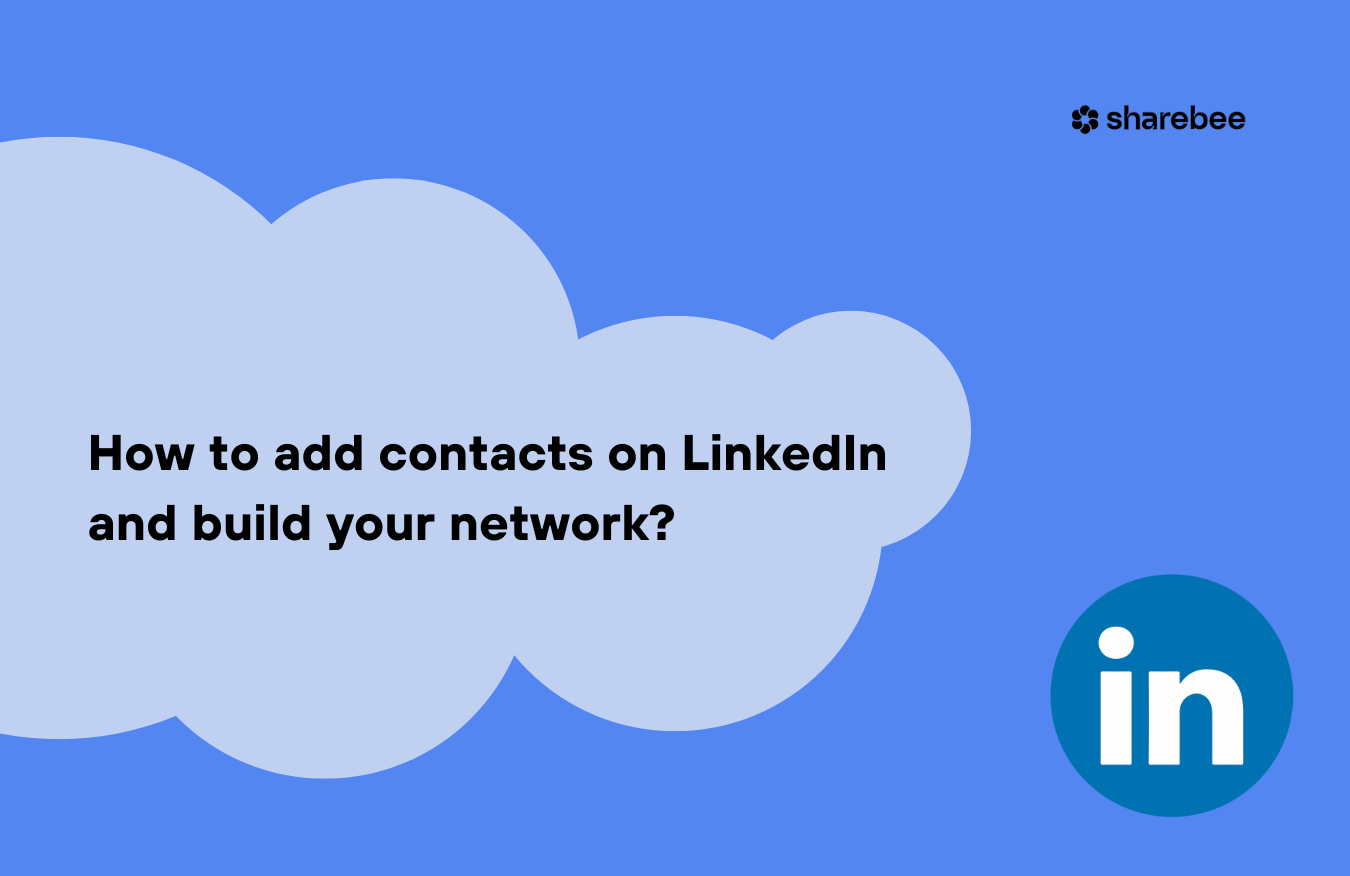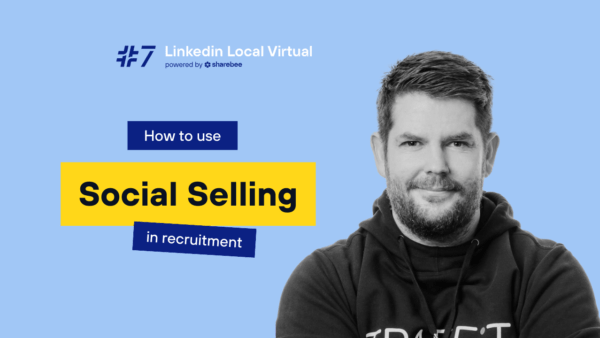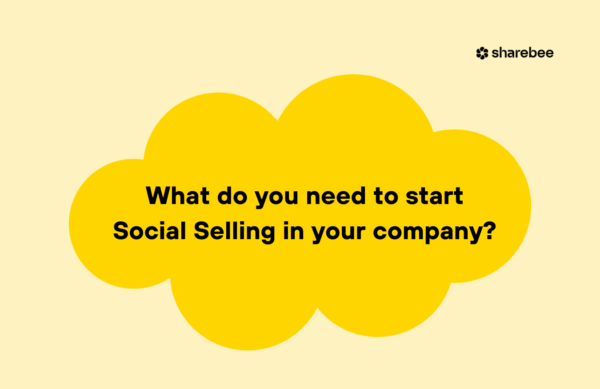How to add contacts on LinkedIn and build your network?

This is the most common question that arises during LinkedIn training sessions, workshops, and LinkedIn Local Virtual meetings. In this text, you’ll find our complete guide to networking on LinkedIn.
Before you start social networking on LinkedIn, you must ask yourself some very basic questions. Who do you want to reach? With whom do you want to build relationships? To whom do you want to sell your services? So start from the very basics.
In this guide, you will find:
Initially, define your target group
Let’s be honest. How well do you know your target group? Do you know what their goals are and what challenges they face? How well do you understand their needs, problems, and do you know how to solve them? Do you know their age and hobbies? Have you ever wondered what their daily life looks like – when they get up, whether they have children, where and how they commute to work, what they read with their morning coffee?
These questions are very detailed, but that’s what this non-magical trick is all about… Creating the most detailed descriptions of the target group can help you increase sales and create a strong brand.
What will developing detailed descriptions give you?
- You will know what topics to address in LinkedIn invitations and pro-sales messages;
- You will learn the hours when it is best to send invitations and when to publish posts;
- You will find it easier to search for contacts on LinkedIn, thanks to the free search engine or the Boolean search type.
How to search for contacts on LinkedIn?
Here’s a little tip to start with. Upon first login, LinkedIn will offer you the option to automatically add contacts from your address book (e.g., Gmail or Outlook) – DON’T DO THIS.
To people you know, but who are not on the site or are registered to another email (e.g., private), you will send unwelcome spam.
So who should you add at the beginning? Easy! Colleagues and people you know. You can take your business card and look for these contacts on LinkedIn.
Also, actively use the LinkedIn search engine. According to LinkedIn data, as many as 76% of your potential customers are ready and interested in starting a conversation on social media. This will allow you to find potential clients, establish contact with them, share knowledge, expertise, build relationships or ask for help. Thanks to research, you will easily identify potential suppliers or industry opinion leaders.
To search for contacts on LinkedIn:
- Tap the search bar at the top of the screen,
- Enter a keyword in the search bar,
- Choose one of the suggestions given in the drop-down list or tap Search to start your search
Advanced LinkedIn search options allow you to specify the position, company size, and industry. Remember, it is best to contact second-degree contacts, as they are the easiest to connect with and find common ground with.
LinkedIn studies have shown that 73% of users find it strange to receive messages from people with whom they have no common points, such as contacts or groups.
A good way to search for people who match our target group is to use the search filters available on the platform in combination with logical data types or Boolean. Then, instead of entering a single keyword phrase into the LinkedIn search engine, you can enter a whole set of words.
Use:- Search with quotation marks when you want to search for a specific phrase (e.g. “Supply Manager”)
- Search with NOT when you want to exclude specific phrases from searches (e.g., “Ruby On Rails NOT Python”)
- Search with OR when you want to expand searches (e.g., “recruitment OR HR Manager OR recruitment specialist”).
- Searches with AND when you want the search to match two specific phrases (e.g. “co-founder AND startup”)
Advanced LinkedIn Search Filters
LinkedIn’s search engine also has built-in additional filters that can help you reach the people you want to connect with. In it, we can search for people based on their current and previous workplace, completed higher education, or even interest in working in non-profit organizations. All you have to do is expand “All filters” and you will see a window in which you can narrow down the search results. That’s why it’s worth knowing our target group as well as possible.
If you are a Sales Navigator user, you can narrow down the search results even more. Boolean search also works here. Click on “Advanced search” next to the search bar. Then choose “search for leads” or “search for accounts” if you are more interested in companies than people. This will give you access to an advanced search field, much more expanded than in the basic version of LinkedIn, in which you can specify how long someone works in a given company, what languages they know, what skills they have, etc.
How to send an invitation on LinkedIn? Use an elevator pitch
They call it the “Elevator pitch” or elevator presentation.
The point is to present your offer (business, brand, idea) in the best possible way in a very short time – about 30 seconds, which is the average time an elevator takes to go from the ground floor to the top floor.
Just as in live networking, on LinkedIn too, you may be asked about yourself and what you do. You can also use an elevator pitch when it comes to LinkedIn and creating contact invitations. But step by step!
First think about what effect you want to achieve? Looking for a job? Maybe you need a mentor to pick up the best practices from your professional area? Or maybe you want to interest someone in your e-book? Remember that everyone has a problem that needs to be solved (sales, marketing, or even HR). Don’t be afraid to talk about this in your invitation or ask directly, because networking should always lead to a “win-win” situation.
A personalized contact invitation should be a maximum of 300 characters. So it’s just a short note in which you need to include as much as possible. And that’s what the elevator pitch is for. Focus on how you can help, write about the client, not about yourself. What you need to be able to write, and previously identify, are the benefits the employer / client will get from working with you. Also clearly define the purpose of the contact invitation.
It is worth spending even a dozen or so minutes to create ideal (the more time we spend on their preparation, the more information will be included in a much shorter content) personalized invitations. Carefully prepared invitations are memorable and make a good impression on the recipient. Besides, they have a much higher acceptance rate.
How to build your network on LinkedIn?
I will answer briefly. Responsibly. The larger the network of contacts with whom you do not regularly communicate, and whose members do not interact with you, the harder it will be for you to promote content.
The algorithm penalizes people who are LiONs (LinkedIn Open Networkers), that is, people who randomly build their network of contacts.
You can invite total strangers, but remember to follow the appropriate networking rules. Ivan Misner, founder of the networking organization BNI, created 3 steps to build lasting business relationships, also online.
This is the so-called VCP, i.e.:
- Visibility (you make yourself known and noticeable).
- Credibility (you present yourself as a professional through publications)
- Profitability (people recommend and refer you to others)
According to these rules, you should not start by selling. First, you need to engage people by posting interesting comments, useful links, sharing important information. Here too, it takes time to go from being visible to gaining trust.
Look for pretexts on LinkedIn
An important thing in making contacts on LinkedIn is naturalness. I often get questions about how to network on LinkedIn so as not to come across as a nag or a desperado.
LinkedIn provides us with information about people who have viewed our profile. They viewed and what next? Most of us get stuck at a dead end and wonder what to do with this information. I recommend checking who has visited our profile (even once a day) and inviting the most interesting contacts to our network.
Another way to expand your contact base is to invite second-degree contacts, i.e. those who liked, commented on or shared our content on LinkedIn.
All you have to do is click on the number of likes under your post, thanks to which you will see the entire list of people who were interested in specific content.
To people who liked the content, as part of building a professional network, you can also suggest in messages or in a contact invitation your other publications on a similar topic.
Use Templates on LinkedIn
In social networking, it’s not about quantity, but primarily about quality. Therefore, you should devote maximum attention to every message you write. However, you can make your task easier with these message templates.
1. Invitation
In every case, the invitation should be personalized and tailored to the person you want to invite to your contacts. You should always refer to the reason why you are inviting this person to your professional network.
Good day [name],
You appeared in the profiles suggested by LinkedIn, which I should add to my professional network. So I wanted to introduce myself and add you to my network, hoping that we can help each other in some way, exchange knowledge or experience.
2. People who viewed your profile
LinkedIn provides us with information about the people who have viewed our profile. They viewed and what next? Most of us get stuck at a dead end, wondering what to do next to avoid coming off as a pushy salesperson or someone who is trying to forcefully expand their network of contacts.
Thanks for visiting my profile [name]. I also had a chance to take a look at yours and I would like to add you to my contact network, because I think we can help each other on several levels.
3. Without common ground
You don’t always have to invite people you know. For this, you can use these sample messages:
Good day [name],
we don’t know each other, but I am expanding my network with interesting contacts from the [industry name] industry. I hope you will accept my network invitation and we will have the opportunity to exchange experiences and knowledge about [topic].
Hi [name],
I am [a big fan of your work, impressed with your career path, a regular reader of your blog / listener of your podcasts] and I would like to add you to my LinkedIn network. If you need help with [topic 1] or [topic 2], I’d be happy to assist or introduce you to someone who could help.
4. Common contact
We much more often accept contacts into our network with whom we have something in common – like acquaintances. Referencing a common contact increases the acceptability of invitations even 13 times, according to LinkedIn itself. However, remember that such a message is easy to verify, so it must be sincere and authentic. It might look like this:
Good day [name],
our common LinkedIn contact [name of common contact] and I were recently discussing [topic]. [name of common contact] recommended you as an expert on this subject. Therefore, I would like to invite you to my network of contacts.
Should you accept network invitations from strangers?
Such doubts are very common. LinkedIn is not Facebook. We do not write about private life, but about professional matters. We are building a personal brand of an expert, specialist, or employee. So, we want to reach people who can help us or who we want to present ourselves to.
LinkedIn can be an effective tool to support you in professional changes, acquiring new clients, or suppliers. But you must allow this, meaning, you need to expand your network of contacts.
If you get an invitation from an unknown person, verify it – take a look at the inviter’s profile, look at the common contacts, check recent activities. This will help you determine whether the invitation was sent by a bot. Or simply ask the person what prompted them to send the invitation.
LinkedIn is a powerful tool
Additionally, it’s free and available 24/7. The power of LinkedIn lies in the fact that upon registration, we have access to a global business database. There’s practically no one we couldn’t connect with.
Sending automated, non-personalized messages does not provide an argument for someone to join our network of contacts, become our client, attend our events, or want to do business with us. But well-practiced social networking can open many doors for you.



